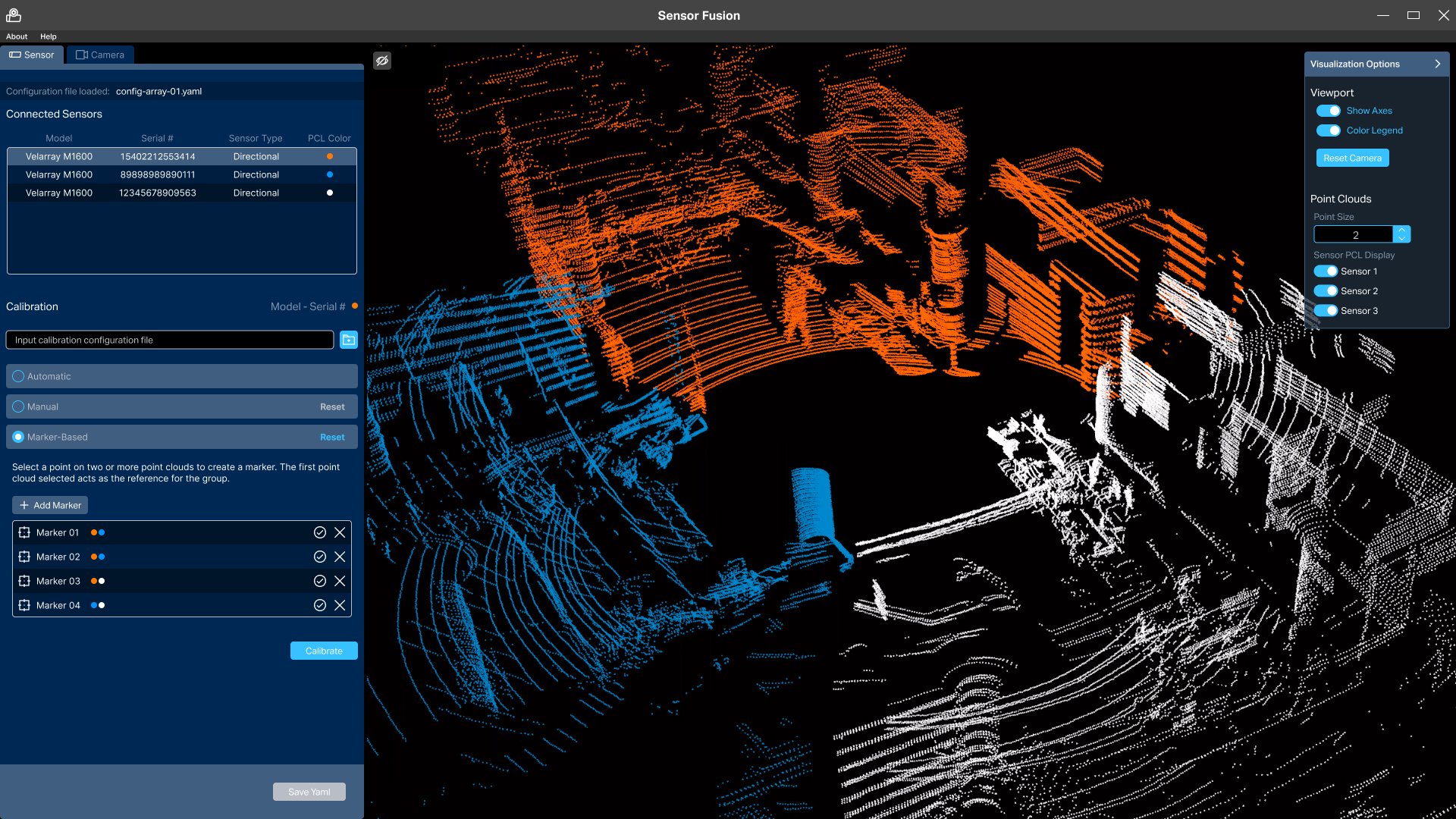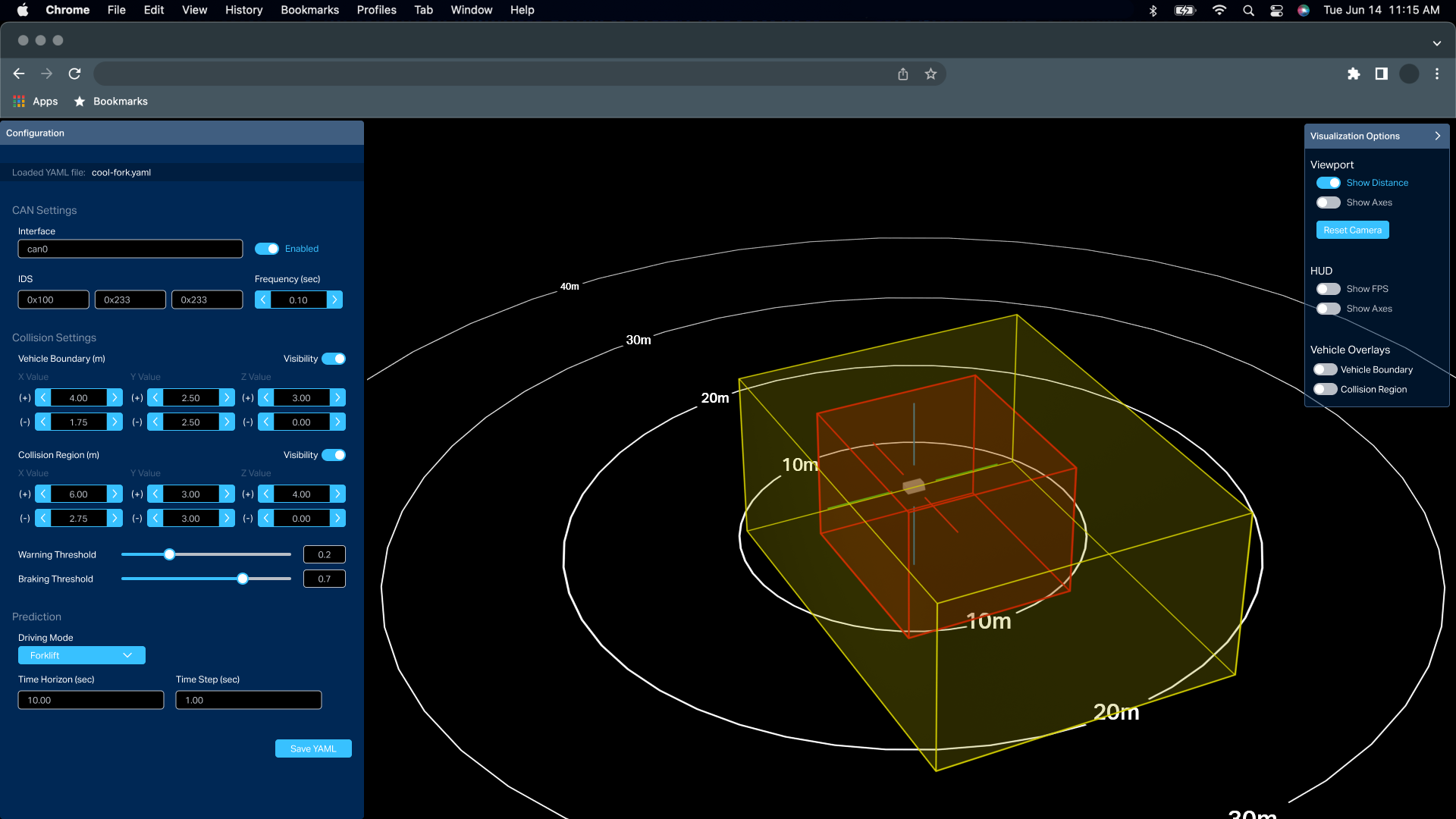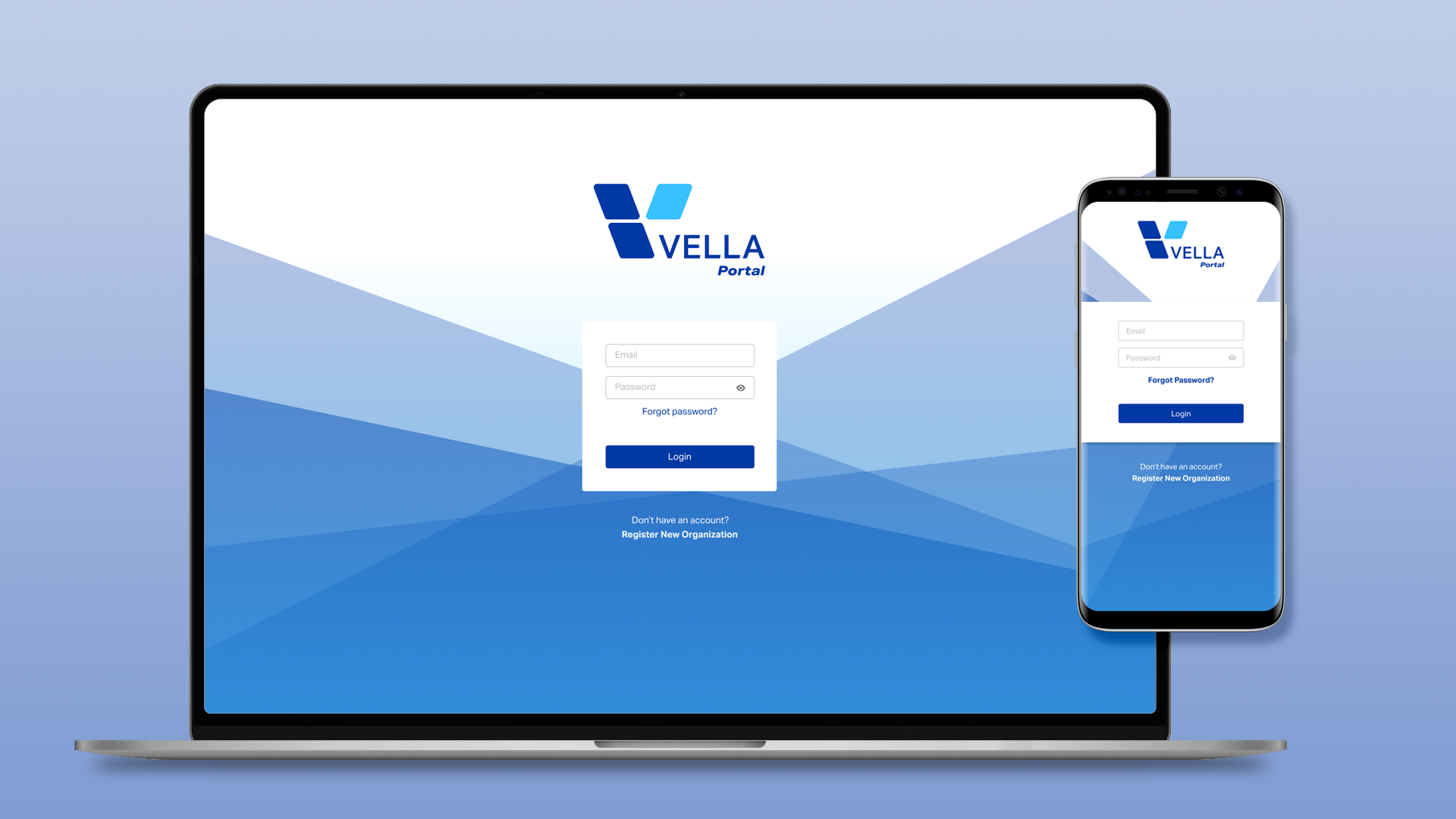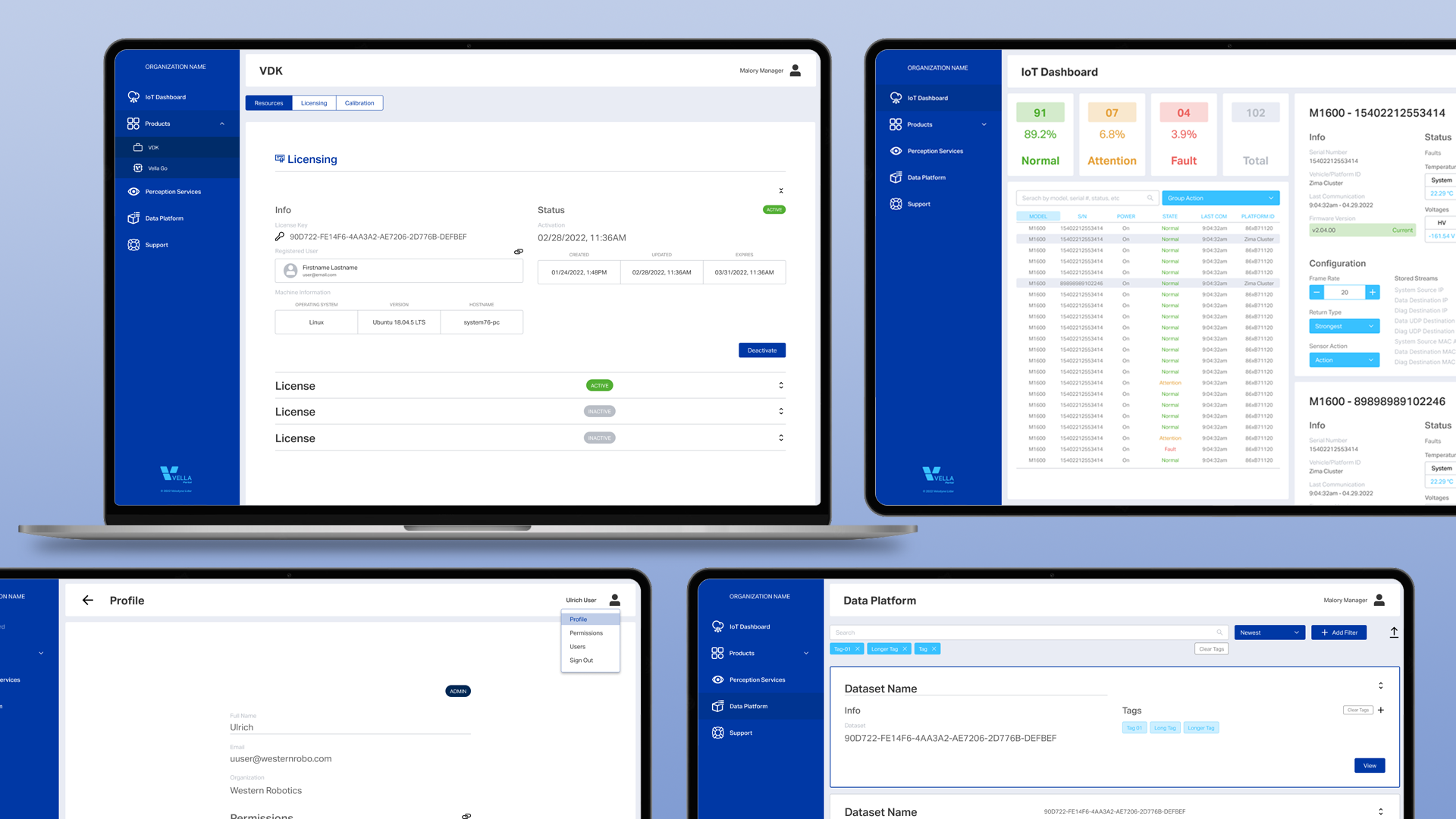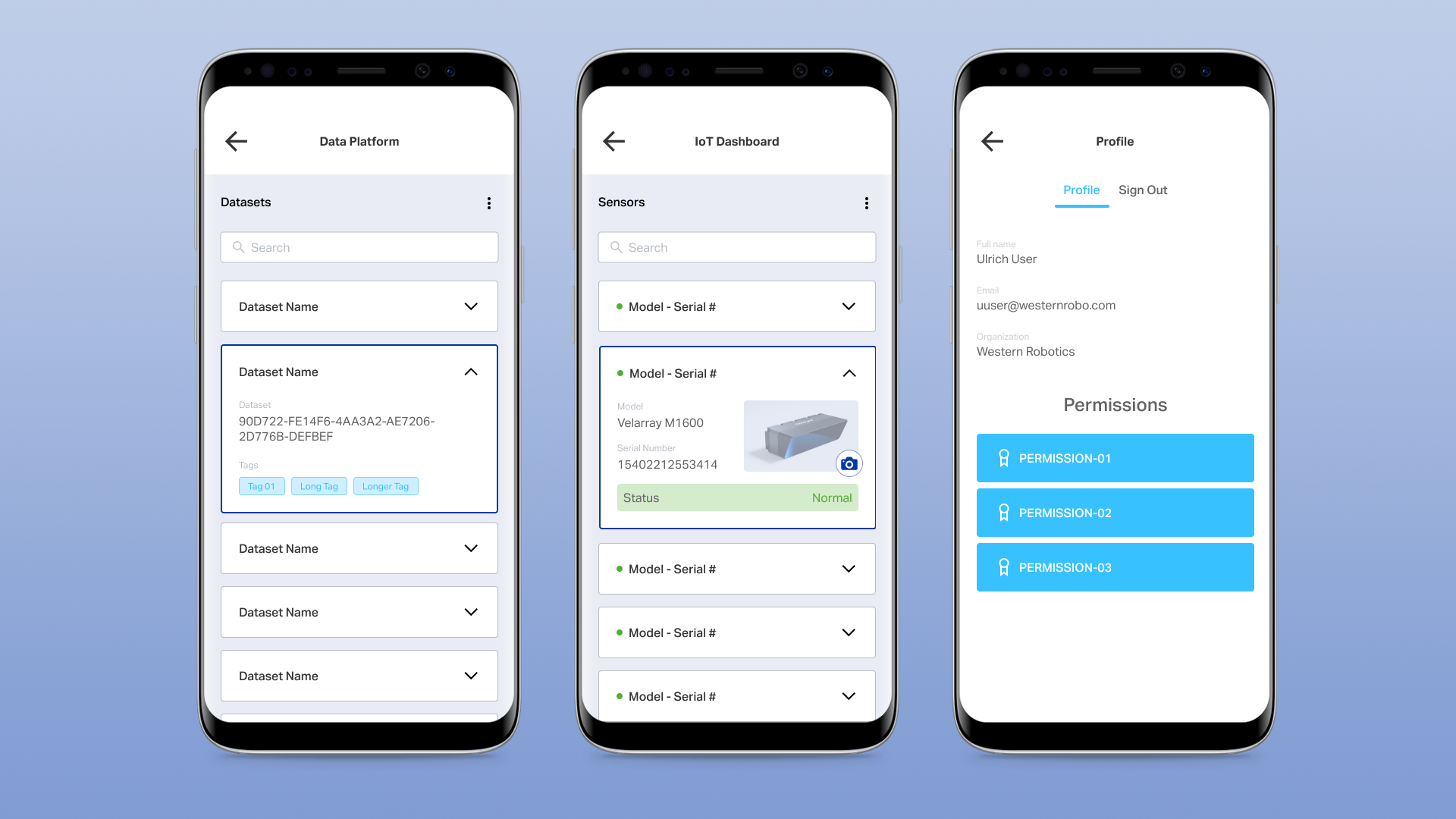Beam UI Library
2020 - 2022
UI/UX Design Lead
Velodyne Lidar
Velodyne Lidar is a company which specializes in Lidar sensor technology for automotive and infrastructure applications. Introducing a software experience to a traditionally hardware-focused company was a valuable learning experience.
As the UI/UX Design Lead it was my job to bring Velodyne’s interfaces and applications out of the command line and into more accessible experiences.
Many processes for interacting with Velodyne’s sensors were done through the command line or manually connecting to its firmware which was often a bottleneck in user flow. This also meant the interfaces looked more akin to science experiments than a cohesive product experience.
The engineers didn’t have a library of components to draw from which made for disparate experiences across our apps.
Our software products had different goals so we needed a design solution for both existing and future products. Enter the Beam UI Library!
A Source of Truth
The goal was to create a versatile UI library for an expanding variety of UI elements while adhering to Velodyne's branding guidelines. Accomplishing this task also ensured that the entire lineup of current and future Velodyne products would have consistent and predictable user experiences that all our engineers would adopt.
Accounting for different code
The library had to be friendly with both web and native run time application implementations, as platform specific codebases sourced data from a live backend.
This was best exemplified with our native run time apps that used C++. The codebase comes with a default set of UI elements but doesn’t have the same breadth of styling as web-based ones. Beam was made with this in mind.
Desktop and mobile
Beam was also designed to work with both desktop and mobile use cases, such as Vella Portal.
It had an array of different apps and services, each with their own feature sets. Beam proved to be robust enough to handle the full experience of desktop browser use case, and a more minimalistic mobile one.
An A/B comparison of an internal configuration tool before Beam UI treatment, and after
In Conclusion
By the time of my departure, apps with Beam were being tested internally before release to the public and touched 90% of our software products. Plans for implementing Beam into a full design system were being discussed, but had not begun.

